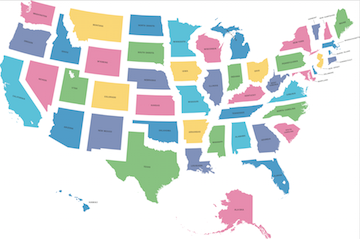
States that currently offer relatively low levels of home- and community-based services or where the projected increase in older adults aged 85 or more years is high would be among those especially at risk in their ability to serve beneficiaries want to stay out of the nursing home under changes to Medicaid funding proposed in the American Health Care Act, according to a new report from the Henry J. Kaiser Family Foundation.
As passed by House Republicans, the Affordable Care Act replacement would change Medicaid funding from being open-ended to being distributed from the federal government to states on a per-capita or block grant basis. The legislation would cut federal Medicaid spending by $834 billion over 10 years, according to the Congressional Budget Office. A fiscal year 2018 budget proposed by President Trump would cut Medicaid funding by an additional $610 billion over 10 years.
Because nursing home coverage is mandatory but most HCBS are optional under Medicaid, states that offer lower levels of HCBS compared with other states “may find it difficult to expand these services to shift utilization and achieve savings from reductions in more costly institutional care in the face of federal Medicaid cuts,” the report authors state.
Currently, according to the report, 55% of overall spending across the country for long-term care goes toward HCBS, ranging from a high of 82% in Oregon to a low of 31% in Mississippi as of 2015. Other states with the lowest shares of long-term care spending going toward HCBS, according to the report, include Florida (33%), Indiana (34%), Louisiana (38%), Hawaii and Michigan (40%), Kentucky (41%), North Dakota (42%), New Jersey (44%) and Oklahoma (45%).
States where the 85+ population is expected to increase the most between 2015 and 2030 also face potential increased demands for Medicaid and could be challenged by funding changes, the authors said. The states with the largest projected increases, according to Census Bureau data compiled by the U.S. Administration on Aging and noted in the report, include Alaska (135%), Nevada (95%), Arizona (84%), New Mexico (66%), Wyoming (64%), Georgia (62%), Idaho and Virginia (61%), South Carolina (60%), and Texas and Utah (59%).
Additional states are at risk for these and other reasons, according to the report.



